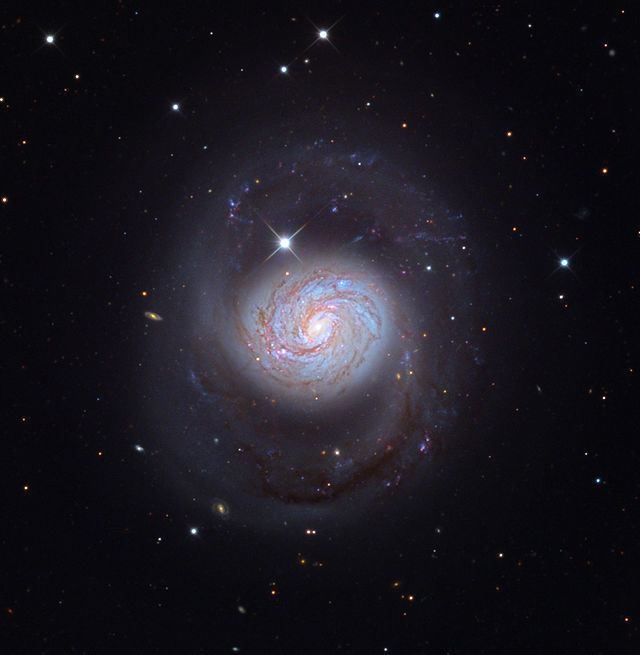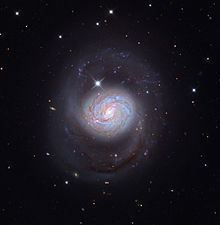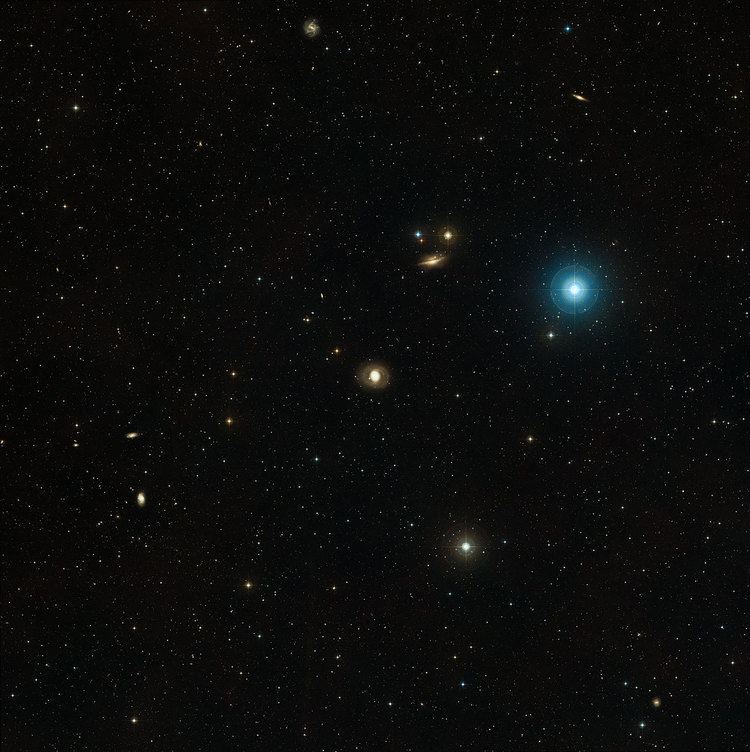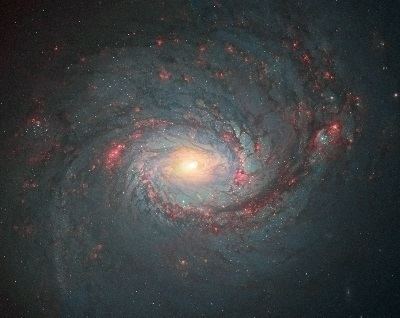Right ascension 2 42 40.7 Redshift 1137 ± 3 km/s Apparent magnitude (V) 9.6 Apparent mass ~1,000 billion M☉ | Declination −00° 00′ 48″ Distance 47.0 Mly (14.4 Mpc) Type (R)SB(rs)b Magnitude 9.61 | |
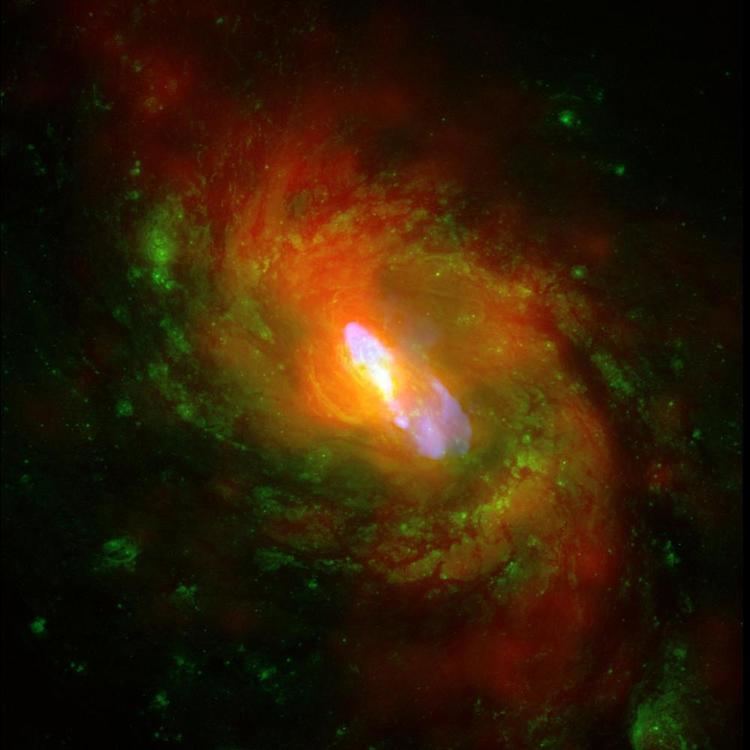 | ||
Similar | ||
Zooming in on messier 77
Messier 77 (also known as NGC 1068) is a barred spiral galaxy about 47 million light-years away in the constellation Cetus. Messier 77 is an active galaxy with an Active Galactic Nucleus (AGN), which is obscured from view by astronomical dust at visible wavelengths. The diameter of the molecular disk and hot plasma associated with the obscuring material was first measured at radio wavelengths by the VLBA and VLA. The hot dust around the nucleus was subsequently measured in the mid-infrared by the MIDI instrument at the VLTI. It is the brightest Seyfert galaxy and is of type 2.
Contents
- Zooming in on messier 77
- Hubble space telescope images spiral galaxy messier 77
- Observation history
- X ray source
- References
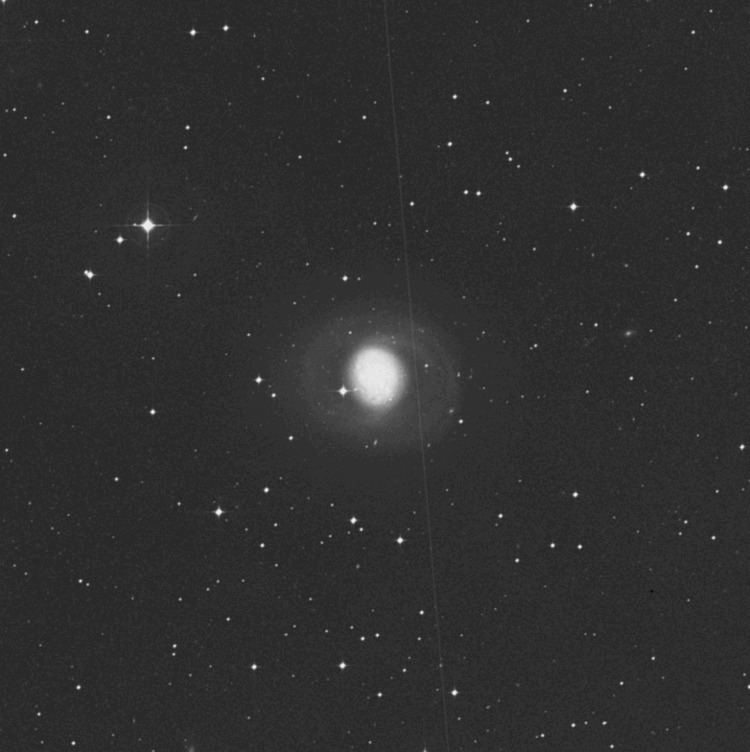
Messier 77's diameter is estimated at 170,000 light-years.
Hubble space telescope images spiral galaxy messier 77
Observation history
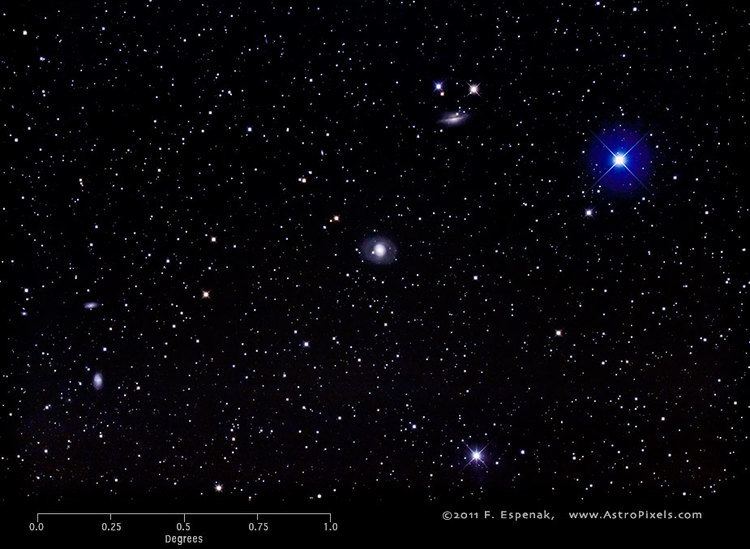
Messier 77 was discovered by Pierre Méchain in 1780, who originally described it as a nebula. Méchain then communicated his discovery to Charles Messier, who subsequently listed the object in his catalog. Both Messier and William Herschel described this galaxy as a star cluster. Today, however, the object is known to be a galaxy.
X-ray source
X-ray source 1H 0244+001 in Cetus has been identified as Messier 77 (NGC 1068, M77).
